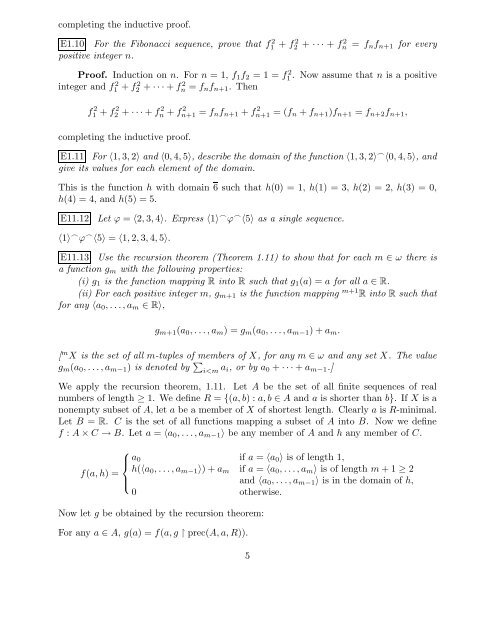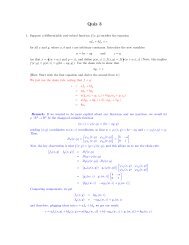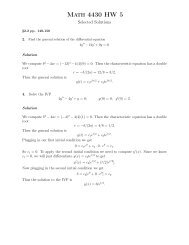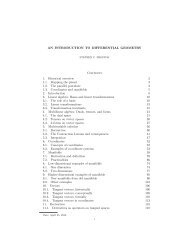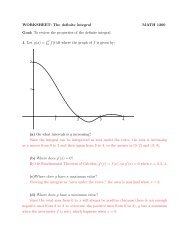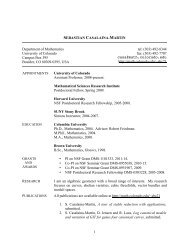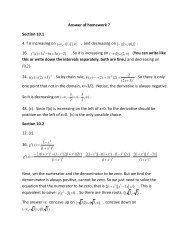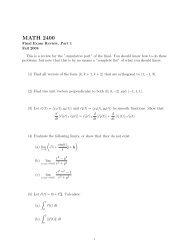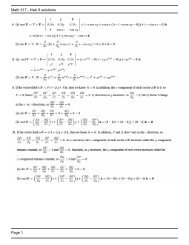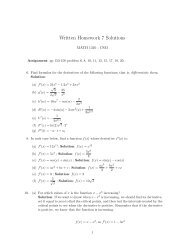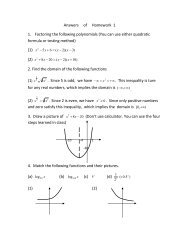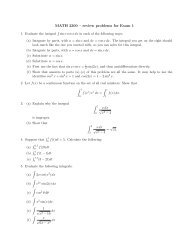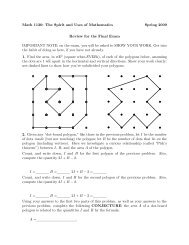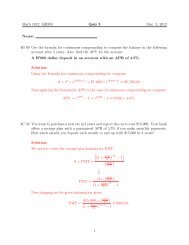Solutions for exercises in chapter 1 E1.1 Prove by induction that for ...
Solutions for exercises in chapter 1 E1.1 Prove by induction that for ...
Solutions for exercises in chapter 1 E1.1 Prove by induction that for ...
Create successful ePaper yourself
Turn your PDF publications into a flip-book with our unique Google optimized e-Paper software.
complet<strong>in</strong>g the <strong>in</strong>ductive proof.<br />
<strong>E1.1</strong>0 For the Fibonacci sequence, prove <strong>that</strong> f 2 1 + f2 2 + · · · + f2 n = fnfn+1 <strong>for</strong> every<br />
positive <strong>in</strong>teger n.<br />
Proof. Induction on n. For n = 1, f1f2 = 1 = f2 1 . Now assume <strong>that</strong> n is a positive<br />
<strong>in</strong>teger and f2 1 + f2 2 + · · · + f2 n = fnfn+1. Then<br />
f 2 1 + f 2 2 + · · · + f 2 n + f 2 n+1 = fnfn+1 + f 2 n+1 = (fn + fn+1)fn+1 = fn+2fn+1,<br />
complet<strong>in</strong>g the <strong>in</strong>ductive proof.<br />
<strong>E1.1</strong>1 For 〈1, 3, 2〉 and 〈0, 4, 5〉, describe the doma<strong>in</strong> of the function 〈1, 3, 2〉 ⌢ 〈0, 4, 5〉, and<br />
give its values <strong>for</strong> each element of the doma<strong>in</strong>.<br />
This is the function h with doma<strong>in</strong> 6 such <strong>that</strong> h(0) = 1, h(1) = 3, h(2) = 2, h(3) = 0,<br />
h(4) = 4, and h(5) = 5.<br />
E11.12 Let ϕ = 〈2, 3, 4〉. Express 〈1〉 ⌢ ϕ ⌢ 〈5〉 as a s<strong>in</strong>gle sequence.<br />
〈1〉 ⌢ ϕ ⌢ 〈5〉 = 〈1, 2, 3, 4, 5〉.<br />
E11.13 Use the recursion theorem (Theorem 1.11) to show <strong>that</strong> <strong>for</strong> each m ∈ ω there is<br />
a function gm with the follow<strong>in</strong>g properties:<br />
(i) g1 is the function mapp<strong>in</strong>g R <strong>in</strong>to R such <strong>that</strong> g1(a) = a <strong>for</strong> all a ∈ R.<br />
(ii) For each positive <strong>in</strong>teger m, gm+1 is the function mapp<strong>in</strong>g m+1 R <strong>in</strong>to R such <strong>that</strong><br />
<strong>for</strong> any 〈a0, . . ., am ∈ R〉,<br />
gm+1(a0, . . ., am) = gm(a0, . . ., am−1) + am.<br />
[ m X is the set of all m-tuples of members of X, <strong>for</strong> any m ∈ ω and any set X. The value<br />
gm(a0, . . ., am−1) is denoted <strong>by</strong> �<br />
i


